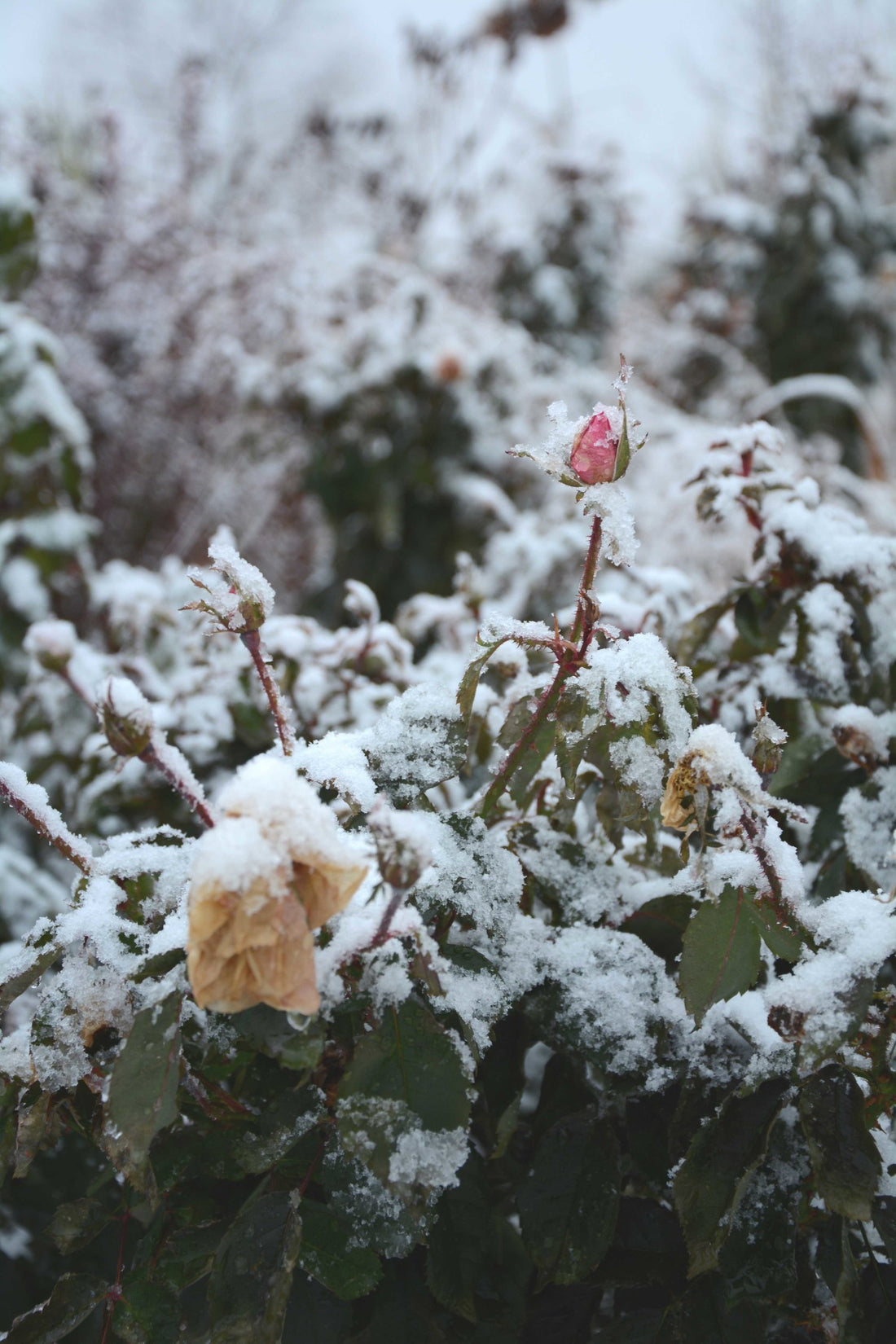
Preparing roses for Winter
Share
Preparing Roses for Winter: A Step-by-Step Guide
As the growing season winds down and temperatures start to dip, it’s essential to give your roses the care they need to survive the harsh winter months. Proper preparation ensures that your roses will come back healthy and strong when spring arrives. Here’s how to winterise your rose bushes and protect them from the cold, frost, and snow.
1. Stop Fertilising Early in the Autumn
Fertilizing roses late into the season can encourage new growth that won't have time to harden off before the first frost. For most rose varieties, stop fertilizing about 6 to 8 weeks before the first expected frost. This allows the plant to enter dormancy gradually and helps it prepare for the cold months ahead.
2. Prune Your Roses (But Not Too Much)
Pruning your roses in late Autumn is an important step in preparing them for winter. However, you should avoid heavy pruning, as cutting too much can expose vulnerable parts of the plant to frost damage. Instead, focus on removing dead, diseased, or damaged stems and any weak or spindly growth. If you have hybrid tea roses, cut the stems back to about knee height (45cm/18 inches) above the ground. For shrub and climbing roses, light pruning is generally sufficient.
Leave the rose bushes tall and slightly untidy if possible, since this will give them more protection against the elements. The goal is to help them survive, not to shape them for next season’s growth.
3. Clean Up the Area Around Your Roses
Before the first frost, take time to clean up any fallen leaves, debris, or dead flowers around your rose bushes. This helps to prevent the buildup of fungal diseases and pests that could overwinter and damage your roses. You can compost the debris or dispose of it, but do not leave it near your roses.
Additionally, consider adding a layer of mulch around the base of the bush. Mulch acts as an insulating blanket, helping to regulate soil temperature and protect the roots from freeze-thaw cycles. Organic mulches like wood chips, bark, or straw work well for this purpose. Apply a thick layer—at least 4 to 6 inches—around the base of the plant, but be sure to leave some space around the stem to prevent rot.
4. Apply a Protective Layer of Mulch
As mentioned, mulch is crucial for protecting your roses’ roots during the winter. It helps to maintain stable soil temperatures and prevents the roots from freezing or drying out. After cleaning up the area around the plants, apply a thick mulch layer to about 6-8 inches around the base of each bush.
For hybrid tea roses or any roses that are more susceptible to cold, consider adding additional protection. You can create a mound of soil or mulch around the base of the bush, covering the graft union (the point where the rose variety was grafted onto the rootstock). This will help insulate the graft and prevent cold damage.
Conclusion
Winterising your roses requires a bit of effort and attention, but the payoff is well worth it when you see your plants thrive come spring. By pruning carefully, applying mulch, and providing extra protection, you can help your roses survive the winter and bloom beautifully year after year. Whether you live in a region with mild winters or harsh, freezing temperatures, these steps will go a long way in safeguarding your roses for the seasons ahead.
